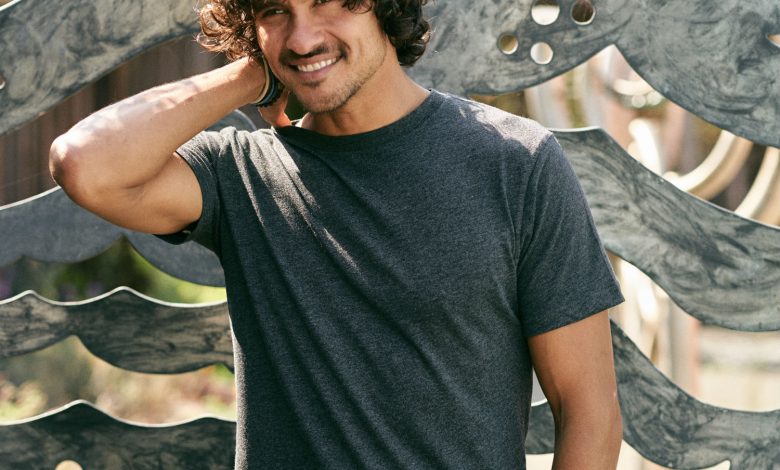As buyers continue to dig deeper into the questions of where and how their clothes are made, one question that persists is “how eco-conscious are these garments?” This is partially due to more people looking for earth-friendly options, but also has a lot to do specifically with waste patterns in the apparel manufacturing industry. The World Research Institute points out that cotton, one of the most widely-used fibers for apparel manufacturing, requires as much as 2,700 liters of water to produce one T-shirt. That excessive consumption puts a heavy strain on water sources in areas like Central Asia, where many garments are produced on a massive scale. These are the same blanks that eventually end up in a decorator’s shop.
What’s more, byproducts from the manufacturing process like pesticides in cotton crops and wastewater from large-scale fabric dyeing contribute to the ongoing issue of global pollution and leave a large carbon footprint. In response to this problem, apparel companies are adapting with new approaches to sourcing, production, and communication with buyers. Even so, buyers should keep a watchful eye when sourcing eco-conscious clothing.
Evolution of eco
Where the eco-conscious culture sits today comes from a variety of influences. A 2015 report by the U.S. Department of Agriculture cited 250 percent growth in organic operations since 2002 when the department began certifying products. Industries in the organic sector include a large swath of food and bath products, but textiles and garments also fall under this umbrella.
That increased supply also seems to correlate to a growing demand for eco-conscious products from buyers. The same data set above cited more than $39 billion in the sales of organic products for that year. For some, tracing that rise in demand points directly to an ever-developing culture of rapid information where buyers get their questions answered with the swipe of their finger. “In the last year or two there’s been a big shift in the consciousness of the consumer,” notes Matthew Boelk, Groceries Apparel. “There’s just so much information out there now.”
What’s more, the younger generations of buyers now emerging, parties agree, look at every aspect of the garments they’re purchasing, from the supply chain to the country of manufacture to what goes on during and after production with raw materials and chemicals.
On the supplier and manufacturer side, Lakecia Hammond, Alternative Apparel, suggests companies are addressing this trend by developing new fibers derived from products like tree pulp. These companies, she also notes, are filtering this work back through their advertising initiatives as well.
“Consumers are continuously evolving into conscious customers who are taking greater note of how they impact the planet,” states Hammond. “With the boom of organic products resurfacing in 2002, apt product placement and advertising have called the average shopper to think more critically about the origins of their purchases.”
What it means
For most parties, a few core components define an eco-conscious garment. For starters, garments that have a less negative impact on the environment are generally considered eco-conscious, be it by using recycled fibers, organic cotton, or other ecologically sound materials. However, Kriya Stevens, econscious, cautions that the growing trend of more apparel companies offering earth-friendly products can make things complicated. “The language that has evolved in the sustainability space is broad and can, at times, be too vague, which presents a challenge,” notes Stevens. Companies that list out specific eco-benefits of their products, she adds, are typically more reputable in this field.
To define a garment as eco-conscious, Glen Brumer, Royal Apparel, recommends buyers look at the sourcing methods. Seeking out manufacturers who use low- or no-pesticide cotton sources, and companies making conscious efforts to reduce waste, he suggests, is a good starting point.
Hammond adds that more often, companies interchange the terms “sustainable” and “eco-conscious.” While both terms have similarities, they aren’t necessarily the same thing. “There is an important differentiation to make between eco-apparel and sustainable apparel,” says Hammond. “Eco-apparel typically refers to how fabrics are produced in relation to the natural environment.” Meanwhile, “sustainable” typically refers to more broad categories like social responsibility, fair trade, and humane working conditions. Despite that, buyers will often find companies bearing the eco-conscious label also simultaneously striving for sustainability.
“The same person who’s eco-conscious is also concerned about the ethicality of the production,” stresses Brumer.
Five Quick Tips for Finding Eco-Conscious ApparelKriya Stevens, econscious, outlines a few common components of eco-conscious garments, and the companies that make them. Sustainable fibers: Each fiber may have their own unique beneficial attribute. Carbon offsets: Many eco-conscious companies will employ the use of renewable energy, recycle wastewater, or use other methods of improving resource use. Local sourcing and manufacturing: Apparel companies that are able to source and manufacture locally reduce transport miles. This is in contrast to the large, fuel-burning cargo ships that carry apparel from places like Central and Southeast Asia to the U.S. Domestic production also means that company adheres to U.S labor laws which typically are more stringent than those in overseas apparel-manufacturing hubs. The end-use of the finished product: Stevens suggests a simple question “Will it cut down on single-use products like grocery bags or to-go cups?” Products designed to last and have a long-life cycle: Garments of higher quality construction and materials can often cost more per-piece, but their longevity and durability can help reduce waste in the long run. |
Check the label
Since some companies will focus largely on the marketing literature over actual manufacturing and sourcing practices (also known as “greenwashing”), buyers can tap into a few key resources and industry-accepted certifications to determine if garments fit their eco-needs. To determine if a company’s truly practicing what they preach, Boelk recommends inspecting the garment construction as a starting point. “Read the label, because many brands will tout their lines as eco-conscious or green-friendly,” he states. Finding fabrics made with close to 90 percent eco fibers like organic cotton, recycled fibers, natural hemp, or tencil, Boelk contends, will generally be a reliable watermark.
An extremely low-priced product can also be a red flag, most sources agree. While the crop of more eco-friendly brands has grown in recent years and price points are generally now more affordable for decorators, buyers should be aware that the price tag will still be slightly higher than a traditional non-organic, 100 percent cotton T-shirt.
Industry-accepted certifications are also a reliable qualifier. Two highly-vetted affiliations are the Global Organic Textile Standard (GOTS) and the Standard 100 by OEKO-TEX. These certifications verify textiles and garments for line items such as recycled fiber content, manufacturing techniques, and chemical inputs. Both certifications are determined by independent testing, and only products that pass a rigorous set of criteria receive certification.
If a shop still needs to ensure the product they’re purchasing meets their eco-conscious demands, many brands and manufacturers now share detailed information on their entire supply chain and production methods. The Corporate Social Responsibility (CSR) business model as it’s known, has grown to encompass ecological factors. Companies now publish yearly or quarterly CSR reports with statistics on key points like wastewater treatment, recycled fiber use, sourcing information, and waste reduction. Generally, these reports outline the company’s long-term goals towards earth-friendly initiatives as well.
Buyers can access these reports directly from manufacturer websites, and most companies also have a designated contact to reach out to, should they need more specific eco-related details.
Selling it
When a shop decides to offer eco-conscious garments, it may initially seem like a difficult decision. Running jobs on eco garments will typically cost more per piece, resulting in a higher price tag for a job quote. However, the consensus is that decorators shouldn’t shy away from offering eco choices to their customers just because it’s pricier. In fact, most agree that having the option is gradually becoming the norm.
“Sustainable apparel is rapidly moving from a novelty to a necessity,” says Hammond. “Depending on a shop’s brand and core values, customers may already be expecting sustainability to be folded into their current products.”
Niche-wise, the clientele for this apparel category truly ranges across the board from specialized industries like the tech sector and musicians to local businesses like farm co-ops, breweries, and restaurants interested in keeping with the theme of ecological or sustainable practices. Brumer also notes that organic, low-impact dye clothing is a popular growing choice in the infant market. Since many scientific studies have begun to reveal the effects of garment chemicals on human skin, concerned parents are seeking safe, well-made clothing for their children.
In addition to smaller local businesses, shops can push the message of ecologically responsible clothing towards larger organizations such as Fortune 500 companies. Many of these companies have mission statements or CSRs that focus on sustainable and earth-conscious initiatives, perfectly aligning eco-conscious apparel with their brand.
Stevens sums up the benefits of offering eco-conscious apparel to clients into three major components: It reinforces that you’re a responsible business owner, gives a shop something new and exciting to promote, and helps businesses stand out from the competition.
Looking ahead
As technology continues to evolve and buyers look to the internet for all of their product-buying knowledge, staying up to date in the eco-conscious market will be crucial, sources agree. This not only means bringing on product lines but being prepared to answer detailed questions about these garments. “There’s such an awareness right now of what really goes on behind the industry,” explains Brumer. “Customers who are yearning for this product have studied it on the internet, so they’ll have questions when they meet with [you].”
For garment decorators, this means maintaining consistent communication with an up-and-coming demographic who’ll look to them for printed goods. By pairing with reliable suppliers that can provide them with up-to-date information, shops can pass that knowledge down to their customers.
Even if a shop isn’t poised to dive head-first into decorating on eco-conscious garments, some preliminary research will be beneficial in the long run. Plus, if a decorator can present themselves to clients as someone who is aware of current trends as well as what’s happening in the broader industry, they stand to maintain a reputation as a shop always on the pulse of their customers’ needs.
Certification ShortlistA quick online search will yield a handful of reputable organizations who certify products as organic and earth-friendly, but these two organizations deal directly with apparel and textiles:
|




